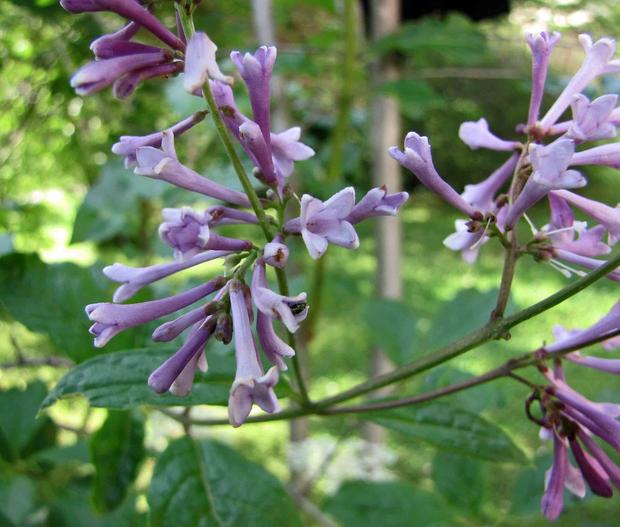Late Lilac
(Syringa villosa)
Late Lilac (Syringa villosa)
/
/

阿橋花譜 HQ Flower Guide
CC BY-SA 2.0
Image By:
阿橋花譜 HQ Flower Guide
Recorded By:
Copyright:
CC BY-SA 2.0
Copyright Notice:
Photo by: 阿橋花譜 HQ Flower Guide | License Type: CC BY-SA 2.0 | License URL: https://creativecommons.org/licenses/by-sa/2.0/ | Uploader: 阿橋 KHQ | Publisher: Flickr




























Estimated Native Range
Summary
Syringa villosa, commonly known as Late Lilac, is a deciduous shrub native to the forest edges and open woodlands of Northeastern China, Korea, and the Russian Far East. It typically grows to a height of 10 feet (3 meters) and a width of 6-10 feet (1.8-3 meters). Late Lilac is characterized by its upright, multi-stemmed form and large panicles of fragrant flowers that bloom in late spring, later than many other lilac species. The flowers range in color from pink to white and purple, and are highly attractive to pollinators such as butterflies and bees.
Late Lilac is appreciated for its fragrant flowers and extended blooming period, which can add color and scent to gardens when other lilacs have finished flowering. It is used for border planting, as a specimen shrub, or for naturalizing in informal areas. This shrub prefers well-drained soil, but is adaptable to various soil types, and while it thrives in full sun, it can tolerate part shade. It is relatively low maintenance but may require pruning to maintain a tidy shape and promote vigorous blooming. Potential problems include susceptibility to powdery mildew and lilac borer.CC BY-SA 4.0
Late Lilac is appreciated for its fragrant flowers and extended blooming period, which can add color and scent to gardens when other lilacs have finished flowering. It is used for border planting, as a specimen shrub, or for naturalizing in informal areas. This shrub prefers well-drained soil, but is adaptable to various soil types, and while it thrives in full sun, it can tolerate part shade. It is relatively low maintenance but may require pruning to maintain a tidy shape and promote vigorous blooming. Potential problems include susceptibility to powdery mildew and lilac borer.CC BY-SA 4.0
Plant Description
- Plant Type: Shrub
- Height: 6-10 feet
- Width: 6-10 feet
- Growth Rate: Moderate
- Flower Color: Pink, White, Purple
- Flowering Season: Spring
- Leaf Retention: Deciduous
Growth Requirements
- Sun: Full Sun, Part Shade
- Water: Medium
- Drainage: Fast, Medium, Slow
Common Uses
Bee Garden, Bird Garden, Border Plant, Butterfly Garden, Deer Resistant, Fire Resistant, Fragrant, Hedges, Hummingbird Garden, Low Maintenance, Rabbit Resistant, Showy Flowers
Natural Habitat
Forest edges and open woodlands of Northeastern China, Korea, and the Russian Far East
Other Names
Common Names: Villous Lilac, Ullsyren, Hong Ding Xiang
Scientific Names: , Syringa villosa, Syringa villosa var. rosea,
GBIF Accepted Name: Syringa villosa Vahl